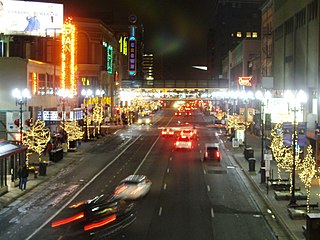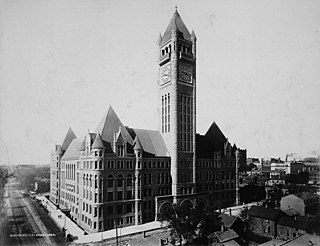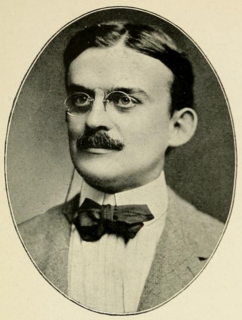This article is missing information about Is it still active? Do people still trade lumber there? In fact, did people ever exchange securities there? There's no info at all about finance here.(December 2018) |
This article may lend undue weight to architecture.(December 2018) (Learn how and when to remove this template message) |
Lumber Exchange Building | |
 The Lumber Exchange Building at the corner of Fifth and Hennepin in downtown Minneapolis. | |
| Location | 423-25 Hennepin Avenue Minneapolis, Minnesota, United States |
|---|---|
| Coordinates | 44°58′47.76″N93°16′18.02″W / 44.9799333°N 93.2716722°W Coordinates: 44°58′47.76″N93°16′18.02″W / 44.9799333°N 93.2716722°W |
| Built | 1885 |
| Architect | Long and Kees |
| Architectural style | Romanesque |
| NRHP reference # | 83000903 [1] |
| Added to NRHP | May 19, 1983 |
The Lumber Exchange Building was the first skyscraper built in Minneapolis, Minnesota, United States, dating to 1885. It was designed in the Richardsonian Romanesque style by Franklin B. Long and Frederick Kees and was billed as one of the first fireproof buildings in the country. [2] It is the oldest high-rise building standing in Minneapolis, and is the oldest building outside of New York City with 12 or more floors. [3]

A skyscraper is a continuously habitable high-rise building that has over 40 floors and is taller than approximately 150 m (492 ft). Historically, the term first referred to buildings with 10 to 20 floors in the 1880s. The definition shifted with advancing construction technology during the 20th century. Skyscrapers may host commercial offices or residential space, or both. For buildings above a height of 300 m (984 ft), the term "supertall" can be used, while skyscrapers reaching beyond 600 m (1,969 ft) are classified as "megatall".

Minneapolis is the county seat of Hennepin County and the larger of the Twin Cities, the 16th-largest metropolitan area in the United States. As of 2017, Minneapolis is the largest city in the state of Minnesota and 45th-largest in the United States, with an estimated population of 422,331. The Twin Cities metropolitan area consists of Minneapolis, its neighbor Saint Paul, and suburbs which altogether contain about 3.6 million people, and is the third-largest economic center in the Midwest.

Minnesota is a state in the Upper Midwest and northern regions of the United States. Minnesota was admitted as the 32nd U.S. state on May 11, 1858, created from the eastern half of the Minnesota Territory. The state has a large number of lakes, and is known by the slogan the "Land of 10,000 Lakes". Its official motto is L'Étoile du Nord.
Franklin Long had formerly worked with Charles F. Haglin, while Frederick Kees had worked with Leroy Buffington for about four years. The partnership of Long and Kees, lasting from 1884 to 1897, was particularly successful and led to the construction of many of the largest buildings in the city in the 1880s and 1890s. Other buildings by these partners included the Public Library (1884), Masonic Temple (1888) (now the Hennepin Center for the Arts), Flour Exchange (1893–1897), Minneapolis City Hall (1889), and the Kasota Block (1884). [4]

Charles F. Haglin was an architect notable for his work in Minneapolis, Minnesota.
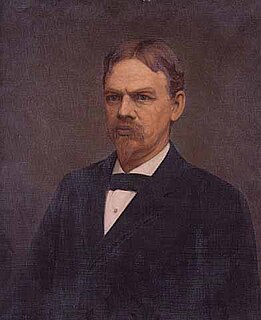
LeRoy Sunderland Buffington (1847–1931) was an American architect from Minnesota who specialized in hotels, public and commercial buildings, churches, and residences. He was born September 22, 1847, in Cincinnati, Ohio. He studied architecture and engineering at the University of Cincinnati and graduated in 1869. He later moved to Saint Paul, becoming a partner of Abraham Radcliffe, and worked on the remodeling of the original Minnesota State Capitol. After the first capitol burned down, Buffington designed a replacement that served as the State House until 1904. In 1881 he claimed to have invented the method of building skyscrapers using load-bearing iron frames. He applied for a patent in November 1887 and received it in May 1888. Even though many subsequent builders used this method of construction, Buffington was mostly unsuccessful in collecting royalties from his patent. Buffington remained in private practice in Minneapolis until his death on February 15, 1931.
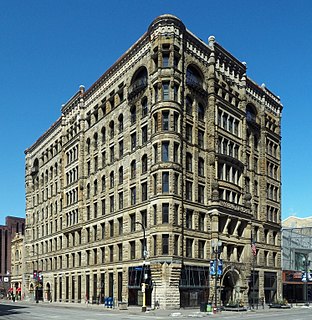
The Hennepin Center for the Arts (HCA) is an art center in Minneapolis, Minnesota, United States. It occupies a building on Hennepin Avenue constructed in 1888 as a Masonic Temple. The building was designed by Long and Kees in the Richardsonian Romanesque architectural style. In 1978, it was purchased and underwent a renovation to become the HCA. Currently it is owned by Artspace Projects, Inc, and is home to more than 17 performing and visual art companies who reside on the building's eight floors. The eighth floor contains the Illusion Theater, which hosts many shows put on by companies in the building.
The building was built in multiple stages. Originally a tall, thin structure, an additional wing was added in 1890. [3] Later, two stories were added at the top of the building. James Lileks, Minneapolis writer and architectural critic, says,
James Lileks is an American journalist, columnist, and blogger living in Minneapolis, Minnesota.
| “ | It's one of the few survivors from the early skyscraper era – and perhaps the ugliest. Of all the buildings on Hennepin, it's the least significant; across the street, the Masonic Temple – a near contemporary – is far more intriguing. The Lumber Exchange survived, though; perhaps it was just too big to knock down. It survived a fire, disrepair, neglect … it just won't go away." [5] | ” |
The Lumber Exchange Building was listed on the National Register of Historic Places in 1983.

The National Register of Historic Places (NRHP) is the United States federal government's official list of districts, sites, buildings, structures, and objects deemed worthy of preservation for their historical significance. A property listed in the National Register, or located within a National Register Historic District, may qualify for tax incentives derived from the total value of expenses incurred preserving the property.




